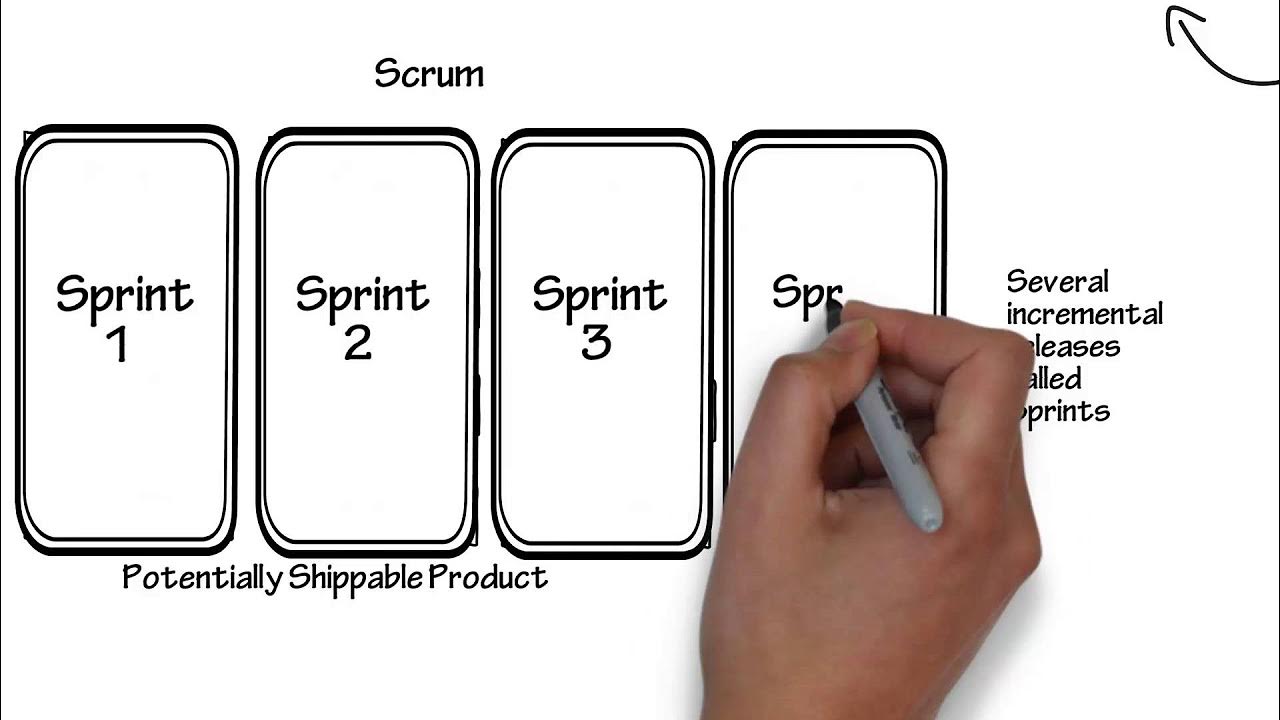TERBARU - Materi & Soal SKB Penata Kelola Sistem dan TI - Pengembangan Agile & Metodologi SCRUM
Summary
TLDRThis video provides an in-depth exploration of Agile development and Scrum methodology, focusing on key concepts, principles, and benefits. It outlines Agile's emphasis on customer satisfaction, flexibility, and continuous improvement through short development cycles or sprints. The video also delves into Scrum as a framework that fosters team collaboration and transparency. Key topics include Agile's models, stages of development, and how Scrum can enhance product management and project efficiency. The presenter also provides several practice questions to help viewers solidify their understanding of Agile and Scrum for public service exams.
Takeaways
- 😀 Agile development focuses on short cycles (sprints) and continuous improvement, ensuring adaptability to changing requirements.
- 😀 Scrum is a popular Agile framework that divides long-term plans into shorter work periods, enhancing communication and adaptability within teams.
- 😀 The 12 principles of Agile emphasize customer satisfaction, the ability to embrace change, and delivering functional software frequently.
- 😀 Agile development stages include planning, implementation, testing, documentation, deployment, and maintenance.
- 😀 One of the key benefits of Agile is increased team productivity, leading to faster product development and higher-quality software.
- 😀 Scrum relies on three main pillars: transparency, inspection, and adaptation, supporting iterative work and fostering teamwork.
- 😀 Scrum teams follow four main phases: sprint planning, daily scrum, sprint review, and sprint retrospective, each with distinct goals.
- 😀 Scrum encourages strong collaboration between developers and stakeholders to ensure the product aligns with user needs and expectations.
- 😀 Scrum values include commitment, courage, focus, openness, and respect, which guide effective teamwork and project execution.
- 😀 The automation of testing in DevOps helps to accelerate the testing process, improve feedback cycles, and enhance overall product quality.
- 😀 Agile methodologies, particularly Scrum, are flexible and adaptive, making them suitable for projects where requirements change frequently or are not fully understood at the outset.
Q & A
What is the Agile methodology?
-Agile is a project development methodology that uses short development cycles called sprints, focusing on continuous improvement, collaboration, and flexibility in responding to changing customer needs.
What is the primary goal of Agile development?
-The primary goal of Agile development is to deliver customer satisfaction by responding quickly to changing requirements, even late in the development process.
What are the 12 principles of Agile development?
-The 12 principles of Agile development include customer satisfaction, welcoming changing requirements, delivering working software frequently, collaborating daily with business stakeholders, maintaining a sustainable development pace, and simplicity, among others.
What is Scrum in the context of Agile?
-Scrum is a framework within Agile methodology focused on managing projects through well-defined roles (Scrum Master, Product Owner, Development Team) and specific events (Sprint Planning, Daily Scrum, Sprint Review), aiming to improve communication and flexibility.
What are the key principles of Scrum?
-The key principles of Scrum include transparency, inspection, and adaptation. These principles help teams to ensure that work is visible, continuously reviewed, and adapted to meet changing requirements.
What are the roles in a Scrum team?
-In a Scrum team, there are three key roles: the Product Owner, who represents the customer; the Scrum Master, who facilitates the process; and the Development Team, who performs the work to deliver the product increment.
What are the main Scrum artifacts?
-The main Scrum artifacts are the Product Backlog (a list of all desired work), the Sprint Backlog (the work selected for the current sprint), and the Increment (the sum of all the work done so far).
How does Scrum support flexibility in development?
-Scrum supports flexibility through its iterative approach, allowing teams to respond to changes in customer requirements and market conditions at the end of each sprint, which typically lasts two to four weeks.
What are the benefits of Agile development?
-The benefits of Agile development include increased team productivity, improved software quality, enhanced customer satisfaction, faster delivery times, and a more adaptive response to changes in project scope and customer requirements.
Why is collaboration between developers and stakeholders important in Agile?
-Collaboration is essential in Agile to ensure that the product being developed aligns with the needs and expectations of stakeholders, resulting in higher satisfaction and a more successful final product.
What is the purpose of the Daily Scrum in Scrum methodology?
-The purpose of the Daily Scrum is to improve transparency and communication within the team by allowing each member to share what they’ve done, what they plan to do, and any challenges they are facing.
What is DevOps and how does it relate to Scrum?
-DevOps is a practice that combines software development and IT operations, aiming to shorten the development lifecycle. In Scrum, DevOps is often integrated to automate testing and improve the speed and quality of product delivery.
Outlines

This section is available to paid users only. Please upgrade to access this part.
Upgrade NowMindmap

This section is available to paid users only. Please upgrade to access this part.
Upgrade NowKeywords

This section is available to paid users only. Please upgrade to access this part.
Upgrade NowHighlights

This section is available to paid users only. Please upgrade to access this part.
Upgrade NowTranscripts

This section is available to paid users only. Please upgrade to access this part.
Upgrade NowBrowse More Related Video

What's the difference between Agile and Scrum?

Scrum vs Agile: Key Differences Simplified! 🚀 | KnowledgeHut

What is Scrum? | Scrum in 20 Minutes | Scrum Master Training | Edureka

What's the Difference Between Scrum and Agile?

What is Agile Methodology | What is Agile | Intellipaat

Introduction to Scrum - 7 Minutes
5.0 / 5 (0 votes)